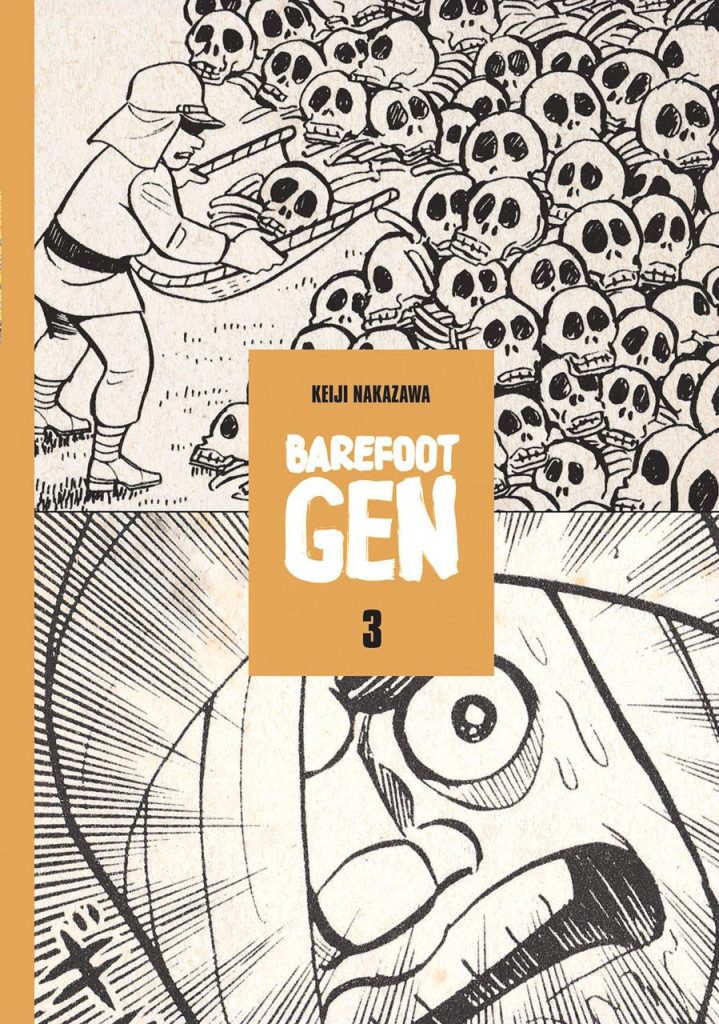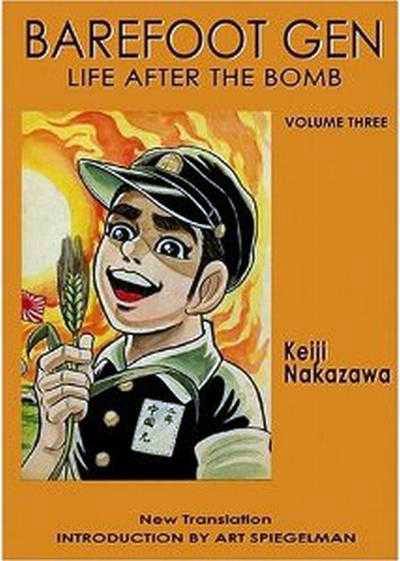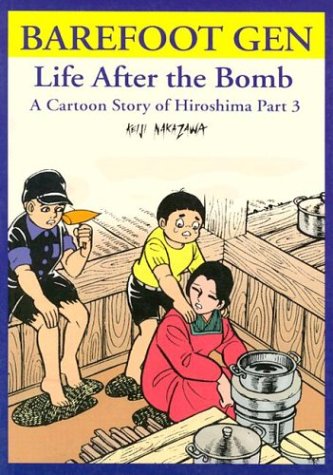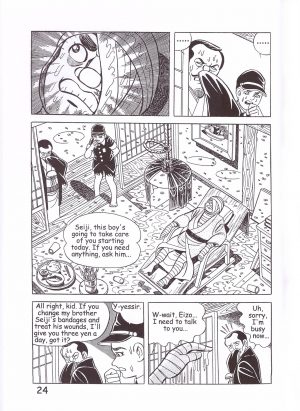Review by Ian Keogh
There’s a considerable difference between the definitive translation of Life After the Bomb and the earlier English editions. Around of a third of the 1989 New Society volume and the 1999 Last Gasp edition now forms part of the revised second volume, and the newer Life After the Bomb restores around 150 pages not found in the earlier translations. Their absence is mystifying as they’re powerful and largely deal with Mr. Seiji, the artist who passed on tips to the young Keiji Nakazawa.
Gen, the stand-in for Nakazawa is seven when Hiroshima is devastated by an atomic bomb. He’s seen his father, older sister and younger brother die trapped in a collapsed house, and shortly after helped his mother give birth to a new sister. To conclude the definitive versions of The Day After we saw Gen and his mother leave Hiroshima to stay with a friend of hers in another city. Nakazawa showed the desperation of people with absolutely nothing left in what remained of the city, and here shows the cruelty of those who can help, but won’t undergo any hardship to make the life of refugees any easier, with those fleeing the horror of Hiroshima considered beggars. Nakazawa’s portrait of some willing to help is of people who’ll exploit tragic circumstances, and the cruelty trickles down to the children. The selfishness has an echo down the years to the present day attitude to refugees.
The last volume showed numerous people mutated by the atomic blast, and in Life After the Bomb Nakazawa shows the horrific conditions Seiji endures after surviving the blast severely injured. He’s consigned to a lingering death by a family more concerned about appearances than basic human compassion, but Gen’s optimism and determination provides some humanity.
When issued by New Society during the 1980s, Barefoot Gen was among the first flush of Japanese comics seen in English, and the exaggerations of violence detracted considerably from the otherwise serious nature for an audience unaware Nakazawa follows manga traditions. However, that’s still the case to a degree. The cartoon overstatement of Gen kicked across the room by Seiji, his being battered by his mother in extenuating circumstances or the comical lump that develops on his head diminishes what’s otherwise as near to realism as possible. The comical rendition affects several other scenes, one being the powerful pages of Gen and Seiji returning home and being ridiculed along the way. Seiji eventually removes his bandages shouting that he’s not going to let people forget what the bomb has done, providing another spur for Nakazawa later in life.
The closing sequence, also omitted from earlier translations, deals with the announcement of Japan’s surrender, ending World War II, and the immediate aftermath, including Gen being reunited with his brother Akira, earlier evacuated to the country for his safety.
Life After the Bomb is far from easy reading, but as with previous volumes, that was never meant to be the case. Nakazawa is presenting reality as it was for him as a child in order to make readers consider their own outlook and behaviour, and it’s a chastening lesson continued in Out of the Ashes.







